I've read a lot of resources regarding Batman. Far too many online articles feel the need to start with an apology for talking about this "geeky" subject. I find this amusing and a little bit sad. I wish it were possible to declare a moratorium on these pointlessly shame-based declarations. We're talking about a nearly seventy year old cultural icon, an item of language. Do we really have time to worry about the opinions of people who have no desire to think about or learn something regarding a symbolic entity with such a high level of cultural familiarity? Because it isn't cool enough? What a simple trick to fall for.
I have some very basic concepts regarding Batman's symbolism, based on my own observations, and the major symbolic emblems attached to him (i.e. bats, caves, robins...). Then there's a wealth of interesting, and highly contended, accounts regarding how Batman was originally created and how he developed through his history in various media. There are so many pieces here, I can't imagine there will ever be anything regarding Batman that is completely comprehensive, by me or anyone else. Regardless of your or my opinion regarding him, Batman is a powerful entity on a semiotic level, and a highly active nexus of synchronistic activity. The reason for this is simple. Batman is magic. Batman is a magic spell.
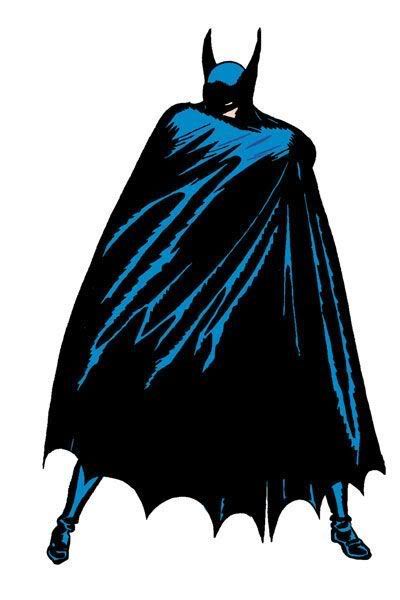
Art by "Bob Kane"
A grandiose statement? Hyperbole? I suppose it depends on how you quantify these terms. I rather like Alan Moore's notion that artists and writers are the same thing as magicians, Stephen King's description of art and writing as an act of telepathic projection, and the basic fact that the words illuminator and illustrator mean exactly the same thing. They do generate inklings. Art is magic. Fiction crafting is magic. Comic book characters are magic spells. Batman is a particularly potent enchantment.
Batman is a found-object art work. He's a conceptual collage. My thoughts on this subject have crystallized from a couple of disparate sources. In my article Day Destroys the Night about the film "Night Watch" I noted the collage of the witch Darya Schultz, subtly acting as an emblem of modernized spell craft. BloggerChristopher Knowles of The Secret Sun featured Max Ernst's "The Angel of Hearth and Home", and in the process made a comparison between Ernst and Jack Kirby, including both artists' practice of collage techniques, and a link to a site featuring a few images from Ernst's masterpiece, the collage novel "Une Semaine de Bonté"/"A Week of Kindness" (a work with the more explicitly alchemical subtitle "The Seven Deadly Elements"). This viewpoint of Batman as conceptual collage, I believe, further coincides with Chris' presentation of Batman as a representative of the golem archetype, as described in his book "Our Gods Wear Spandex". Indeed, comparison to the golem demonstrates how very fundamental the symbolic association between art and magic truly is.
As said, there is a great deal of material available regarding Batman, his precedents, his antecedents and the various accounts of the character's creation, and much of it is contradictory. The initial concept was the product of two individuals, though only one of them receives official credit, artist Bob Kane and writer Bill Finger. In the three part article Secret Origins of Batman, Robby Reed of "Dial B For Blog" presents a highly compelling case detailing examples of how Kane created the original Batman character and his adventures through plagiarism and image lifting. His evidence is hard to refute, making it clear Bob Kane was a hack. But given the scope of the creation, an ingenious hack. Is this kind of thing only acceptable if your name is Roy Lichtenstein?.
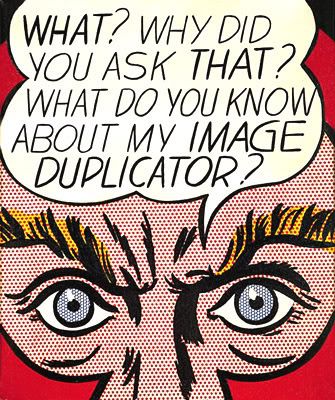
Roy Lichtenstein, "Image Dupliator", 1963
The intent of this article, however, is not to place judgment on any of the various artists, as they are only doing what artists sometimes do. The magic performed by the visual artist is at times not dissimilar to stage craft. We are talking about illusionists after all. The fact that we can dissect Batman, remove and examine his components so easily is actually a real gift. Further every allusion to the inspirations of Batman is information bundled to the character, and thus worth noting, even the outright lies. Let me stress, while you may encounter information and revelations about the creation process behind the Batman character, the presentation of that information in this article is so we can examine the network of esoteric symbolism that makes up the character.
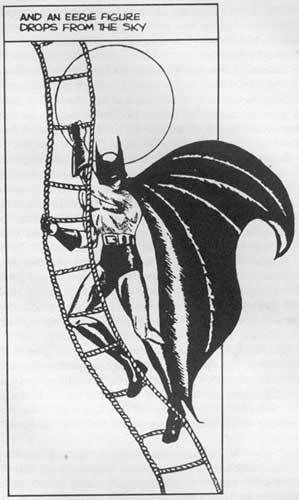
Art by Bob Kane
The partnership between Bob Kane and Bill Finger predated the creation of Batman and from its onset involved Finger working as an uncredited ghost writer for Kane. One of their earliest collaborations was "Rusty and His Pals" in National's "Adventure Comics", a crude take-off of Milton Caniff's sophisticated "Terry and the Pirates". Caniff's work has obvious stylistic influence on Kane, to such a degree that Kane even duplicated Caniff's manner of signature.


The "Terry and the Pirates" influence on Batman is particularly noteworthy after the introduction of Robin, the relationship being similar to that of Terry and Pat. Kane and Finger also created a character called "Clip Carson" based on Don Moore and Alex Raymond's "Jungle Jim". The synthesis of elements composing Batman exists even at the level of the name chosen for his civilian identity. Bruce is described as deriving from Robert the Bruce of Scotland, and Wayne from the Revolutionary War figure Mad Anthony Wayne (who also inspired the stage name of actor Marion Robert Morrison, John Wayne).
The basic outline that the collaged figure of Batman was built upon is Superman. National had immediate commercial success with Superman and wished to duplicate it in the pages of "Detective Comics". Comics pioneer Vin Sullivan hired Kane to create a new super-hero. Kane's initial concept was a character called Bird-Man (establishing important Bird symbolism to Batman at a very fundamental level), likely inspired by the Hawkmen of Raymond's "Flash Gordon" strip. Then either Bill Finger, or Kane himself, depending on which one you asked, decided to change the innocuous sounding "Bird-Man" into the more gothicly atmospheric "Bat-Man". In his autobiography Kane cited three sources of inspiration for the character, the 1920 Douglas Fairbanks film "The Mark of Zorro", the 1930 Roland West film "The Bat Whispers", and Leonardo Da Vinci's bat-wing like flying machine sketches.
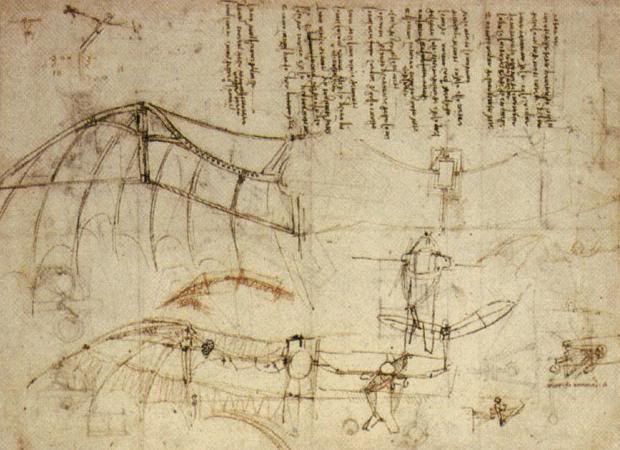
Leonardo Da Vinci, "Study of the Construction and Control of a Wing", 1490
Images supplied by Kane to support the latter claim have been proven to be later creations that he predated, so a hoax on his part. I think it's interesting when anybody invokes Da Vinci, even if it is after the fact. I have to wonder if Bob Kane was aware that Da Vinci's "Codex Atlanticus" also includes his designs for a camera obscura.
Johnston McCulley's pulp character Zorro was himself inspired by "The Scarlet Pimpernel" and Russell Thorndike's Doctor Syn (a swashbuckling hero who took on the counter identity of "The Scarecrow"). Like Batman, Zorro's alternate identity is a wealthy socialite who dons a cowl to fight injustice. Likewise Zorro (Senior Zorro meaning Mister Fox), carries symbolism of an animal with an ambiguous nature (the Fox is explicitly Promethean). Other figures cited as inspiring Zorro include Robin Hood and Spring Heeled Jack, the latter particularly relevant regarding Batman.
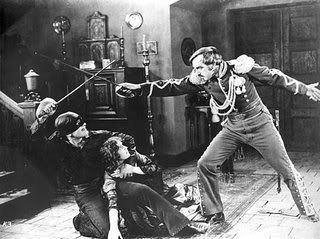
Fairbanks' "The Mark of Zorro" was an adaptation of Zorro's first adventure, "The Curse of Capistrano", a title that is itself resonant of Bird symbolism. The influence of Zorro on Batman is such that it is even worked into Batman's origin. It is the film Bruce Wayne's parents took him to see on the night that they were murdered. This is the case with almost every presentation of Batman's origin, a notable exception being Christopher Nolan's "Batman Begins", which took the opportunity to elude to Batman's deeper roots into the Baroque by utilizing a fantastical, bat/demon populated opera, perhaps a production of "Faust", which would be fully appropriate.
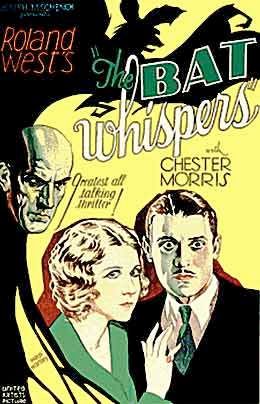
Roland West's "The Bat Whispers" also featured a mysterious, masked man who preyed on criminals (though he himself was also a criminal), and one explicitly utilizing a bat theme to invoke fear in his opponents. "The Bat Whispers" is a remake by Roland West of his earlier film, "The Bat" from 1926, based on a 1920 Broadway play by Mary Roberts Rinehart (the mystery writer who first utilized the phrase "The butler did it.") and Avery Hopwood. Though not cited by Kane, the costuming of the original film is decidedly Batman-like.
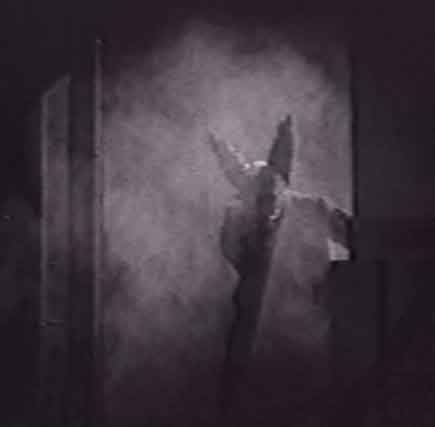

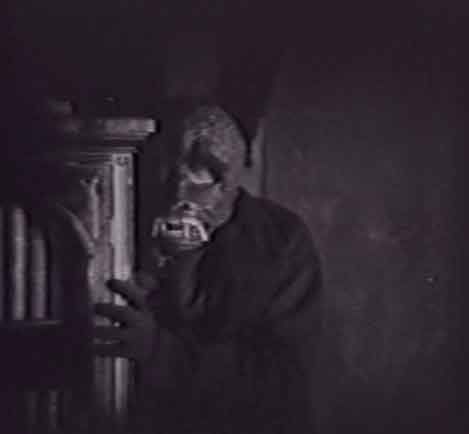
For his part, Bill Finger has cited Sherlock Holmes and pulp figures Doc Savage and particularly The Shadow. It is possible certain inspiration came from the short 1933-34 pulp run of a mystery character The Black Bat in "Black Bat Detective Mysteries", however, the more similar pulp Black Bat character was introduced more or less congruently with Kane and Finger's Batman, leading to mutual Finger pointing and lawsuits. The second pulp Black Bat, from "Black Book Detective" magazine, featured a DA who was blinded and scarred by acid thrown in his face, an origin repeated in the Batman villain Two-Face, and strikingly similar to Marvel's blind-lawyer super hero Daredevil.
Bill Finger for certain generated many of the Batman conventions, including the Utility Belt, all the Bat-Equipment and the Bat-Vehicles. It seems he and Jerry Robinson (note the last name), primarily came up with the important character of Robin. We can only speculate regarding Bill Finger's level of occult interest or conscious insight to esoteric symbolism, but it is very interesting that he also co-created the original Green Lantern (Green Language being synonymous to the Language of the Birds), and the Dionysian Wildcat, not to mention the Joker, the Penguin, Catwoman, the Riddler, Two-Face, etc.
Batman made his debut in National's "Detective Comics" #27, May 1939, in an adventure titled "The Case of the Chemical Syndicate", a story that seems directly influenced by the Shadow story "Partners of Peril" from "The Shadow" magazine, November 1936. It seems very little of the first Batman adventure wasn't lifted from other sources. Many, many panels from the earliest Batman adventures are obvious direct tracings of illustrations by Henry Vallely. Even the famous cover of "Detective Comics" #27 features an image of Batman copied from a panel of Alex Raymond's "Flash Gordon" strip.

Art by Bob Kane
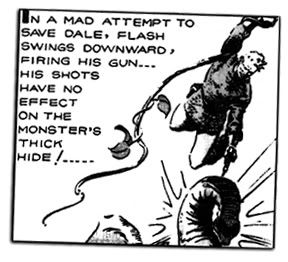
Art by Alex Raymond
Batman's origin was not detailed until "Detective Comics" #33, November 1939. As a young boy Bruce Wayne witnessed the murder of his parents, and he made an oath to rid the city of crime/evil. I find it a very interesting aspect of the character that his super heroic career, his initiation, involved witnessing an event, seeing something that permanently altered his reality and his consciousness.
To fulfill his oath Bruce Wayne trained himself to physical and mental perfection. He then decided to utilize theatrics in his war on crime, to perpetuate a kind of hoax, the creation of a seemingly supernatural force of nocturnal justice. A kind of reversed Spring Heeled Jack. The format for this hoax was decided based upon a happenstance/fate as a large bat flew through an open window in Wayne's study.



Art by Bob Kane
And once again we find an iconic image of Batman by Bob Kane that is itself a lift of another illustrator's composition, in this case an image of Edgar Rice Burroughs' Tarzan by Hal Foster.
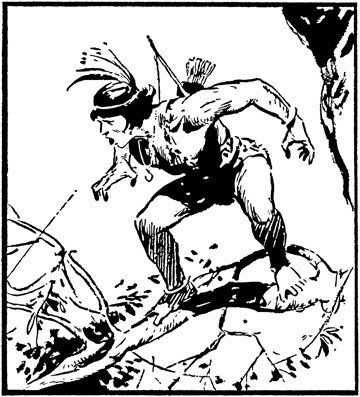
Art by Hal Foster
Note how much more natural the figure's posture is in the Tarzan panel as compared to the Batman panel. The discovery of this and many of the other Kane lifts from early Batman comics was made by DSK, author of "The Vallely Archives", linked above.
So for a second time Bruce Wayne's observation, his visual experience, affects his development, something he witnesses directs the course of his life's purpose, a second level of initiation. The bat flew through the window through coincidence, an event explicitly described as an omen.
J.E. Cirlot describes the symbolism of the Bat as ambiguous, with contradictory implications, but for the most part infernal. He further states the Bat's alchemical meaning is related to that of the Dragon and the Hermaphrodite. Hans Biedermann notes the relationship to vampires, fallen angels (who like dragons frequently are depicted as having bat wings), demons, and as an item frequently present in images of witches. In China, however, the Bat is a lucky emblem, due to the homonym of the words "Bat" and "Luck", both "Fu". A Chinese design featuring five bats refers to the five forms of "earthly happiness", long life, wealth, health, love of virtue and a natural death. African mythology emphasizes the intelligence of Bats as they never collide with anything while in flight. Highly pertinent for the vigilante character of Batman (whose initiations were based on visual experience), is the classical use of Bats as symbols for vigilance.
In "The Odyssey" the souls of the dead are depicted as Bats. As nocturnal, cave dwelling, flying creatures the connection to the Underworld/Afterlife is a natural association. All Other Worlds stem from the Underworld, connected to the subterranean likely long before recorded history. Even Alice had her first adventures Underground. This association between the "other world" of caves and the afterlife seems to inform the ancient Mystery Cults, who widely utilized subterranean locales as sacred places, and initiatory sites.
This is no small detail, as the overwhelming mythological resonance of the Batman character is Plutonian. I think this is self-evident, especially considering Batman's excessive wealth, his underground headquarters, his repeatedly demonstrated ability to vanish in plain sight, his role in meting out punishment to wrong-doers, etc. The combination of Bat and Human traits invariably produces an infernal entity. If we keep in mind the very frequent symbolic associations between comic book super heroes and Eleusian Rites, we can note that a Plutonian figure easily falls within this system. It is just unusual to see the Hades figure presented as the hero, but changing a figure's exoteric nature as good or evil is an easy and effective form of distraction (as is changing a figure's gender), and could be viewed as holding symbolic intrigue on its own (meaning it's conceivable that the reversal has a specific underlying meaning). Batman would hardly be alone as a demon or devil hero, I'm sure we can all agree.
It is then easy to see how Batman is Luciferian, which corresponds to being Promethean. Note also that this Promethean characteristic is present too in Batman-inspirer Zorro, Senior Fox, another torch bearer. "Chaos Magician" Grant Morrison, who surely understands the concept of comic book character as magic spell, made a comparison between the members of DC Comics' Justice League of America to the Olympian gods when he revived the title twelve years ago. Batman of course was compared to Pluto. Frank Miller made an analysis of the character that is somewhat different, but equally intriguing. He described Batman as, "-a Dionysian figure, a force for anarchy that imposes an individual order".
This is a really interesting observation, and one that we can see repeatedly, even in the components making up the Bat-Collage. The Dionysian Rites are even more ancient then the Eleusian, and naturally informed them. Dionysus is an Underworld figure, an important model for initiation practices, who enters and emerges from the Underground. Batman naturally shares many similarities to Bat/Underworld related Vampires, blood-drinking undead that likewise relate to Dionysus. Tarzan, the Lord of Animals, is clearly Dionysian in nature. Even the vine from Raymond's Flash Gordon panel, which became the Bat-Rope when copied by Kane, continues the model. Note Batman's romance/nemesis relationship with Catwoman. Is it conceivable then that the Batmania (and all those fantasy sitcoms for that matter) of the early sixties contributed to Dionysian explorations of the late sixties?
No comments:
Post a Comment